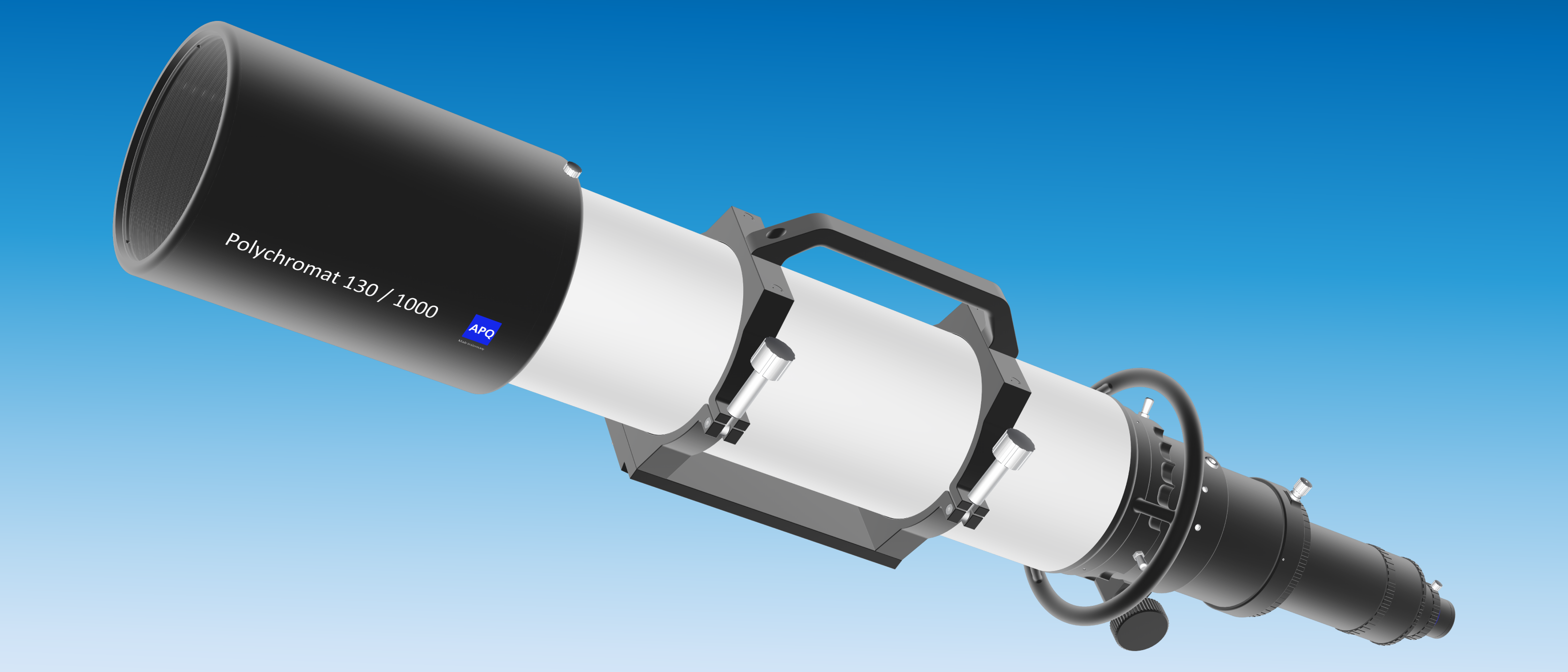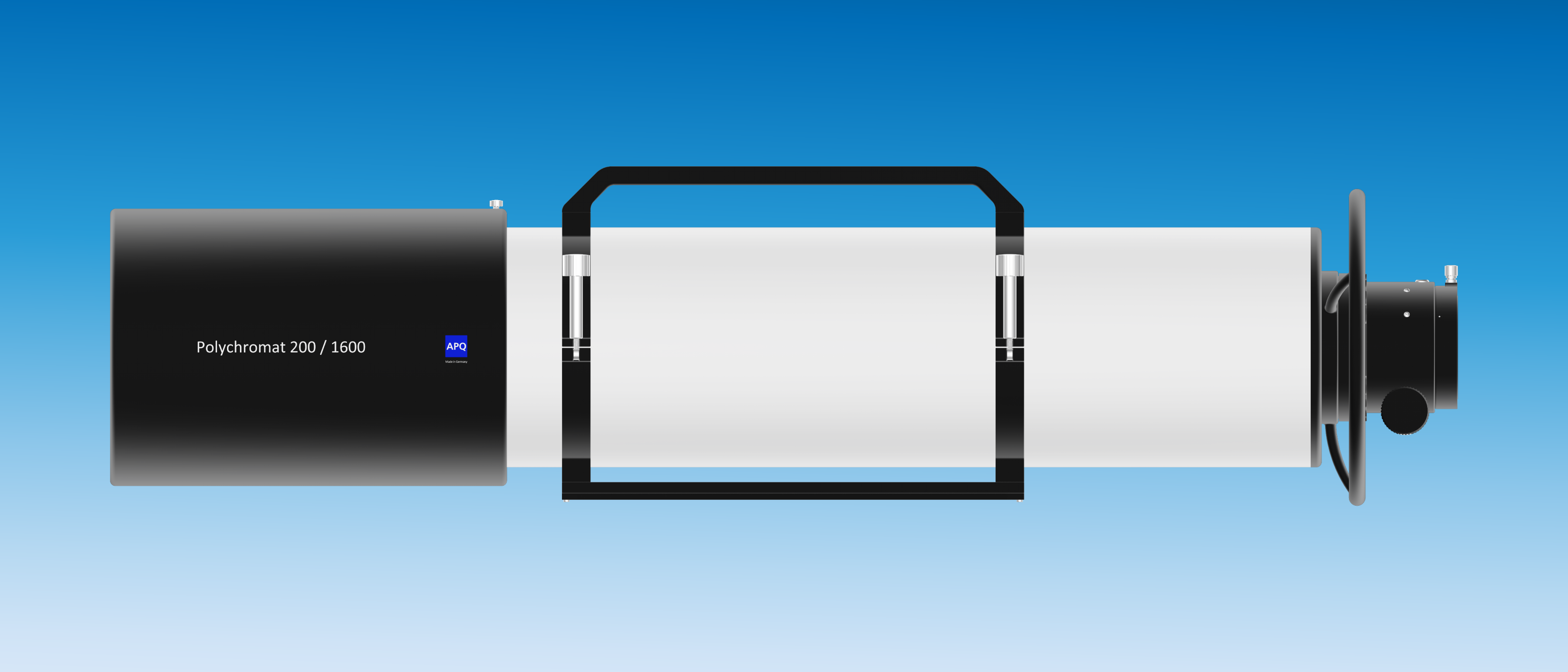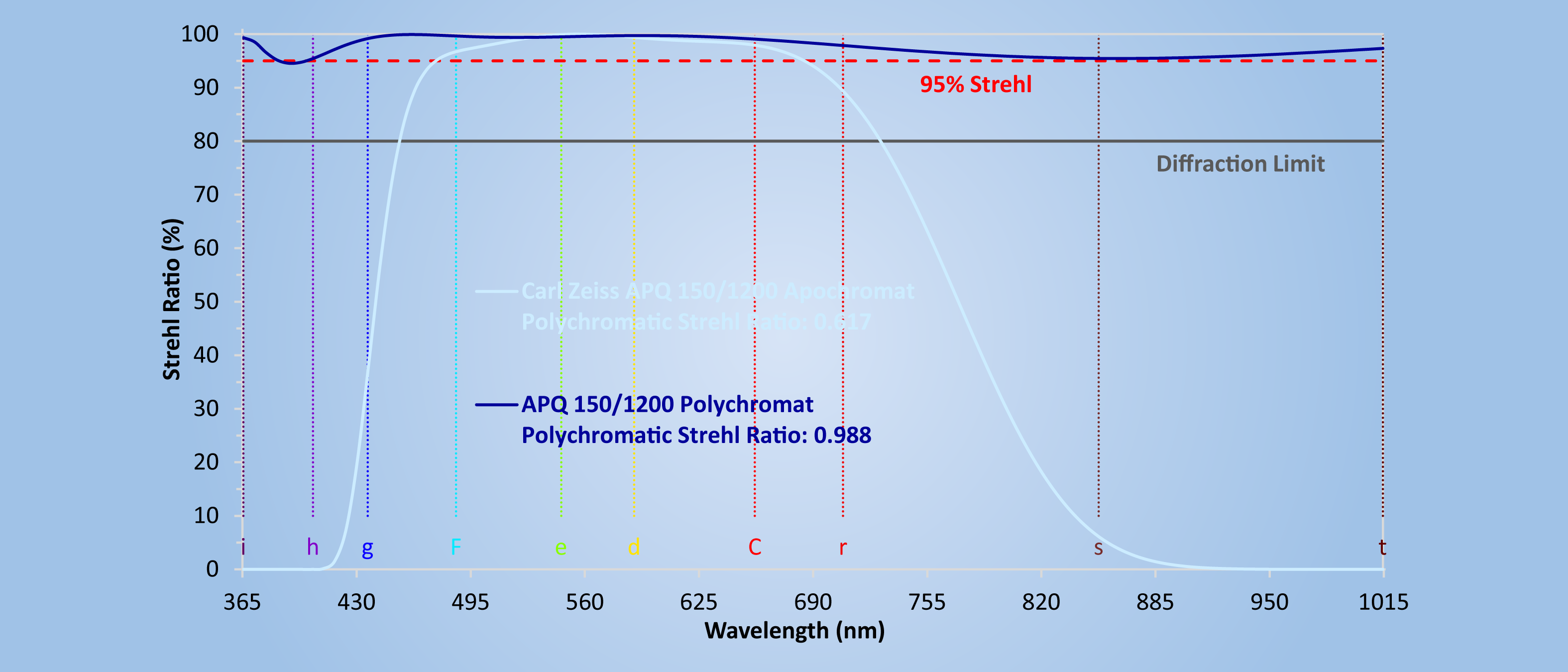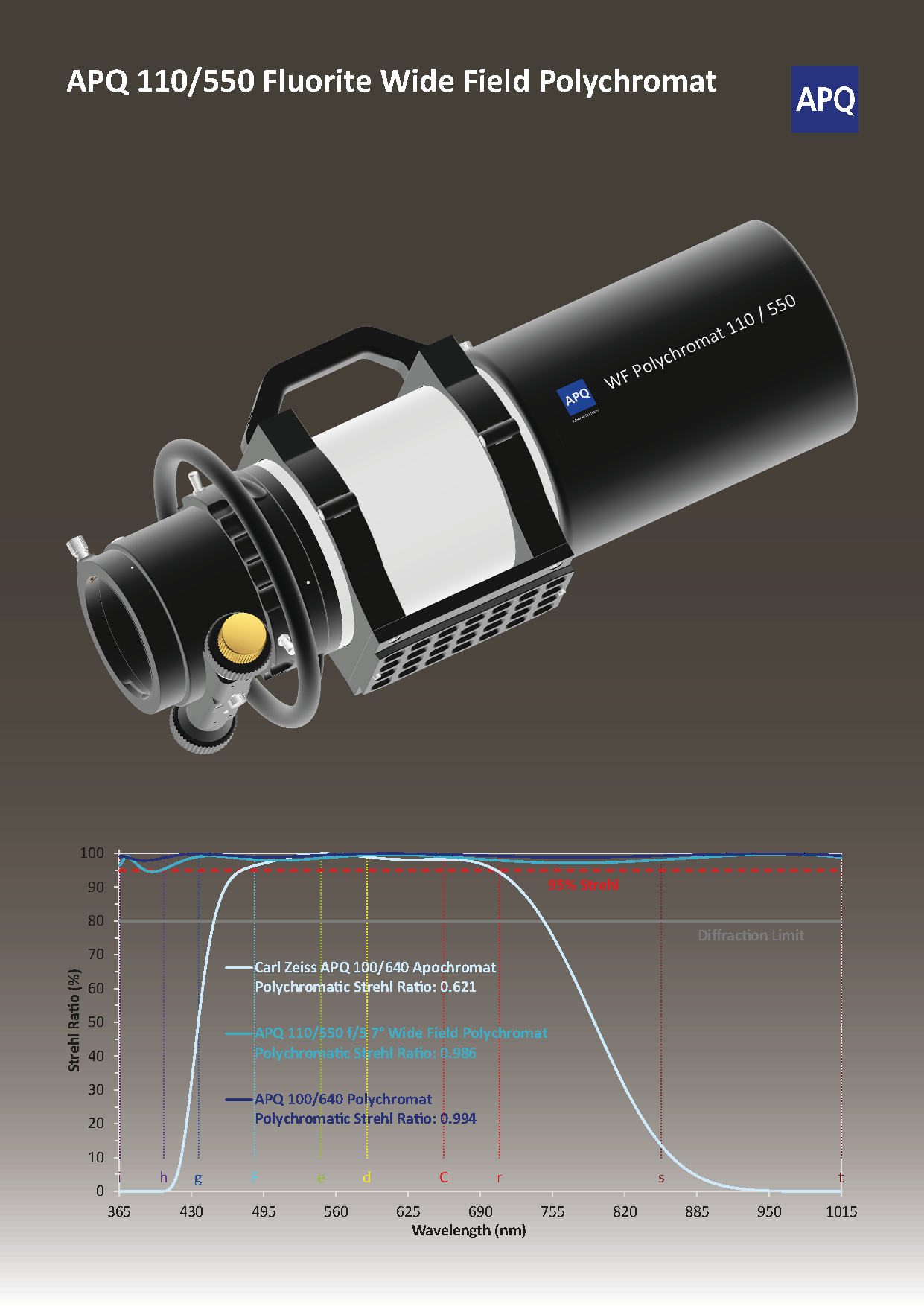Only through the extreme we reach clarity
Friedrich Schiller 1759-1805
Astronomical optics from Jena
APQ JENA brings astronomical optics and instrument technology back to life after 25 years in Jena.
The basis for this is the existing competence, the specialist knowledge of the scientists, developers, engineers and specialists as well as the more than 100-year tradition of the Astro Jena site.
The production takes place in Jena Made in Germany. The small series character also allows for individual and special production as well as the consideration of individual customer wishes.
APQ Fluorite Polychromats
The focus of our development and manufacturing program is on completely new Fluorite Universal Polychromats and Fluorite Wide Field Polychromats, which are significantly superior to conventional doublet and triplet apochromats.
The main feature of both optical designs is the polychromatic correction with a diffraction-limited imaging quality over a spectral range from 365nm (UV) to 1014nm (IR). Both visual observers and astrophotographers in particalur will benefit from this.
These are the first polychromats as astronomical optics, which we are now making available to a broad user group.
Use in science and industry
New application possibilities open up in industrial research, sciences, optronics and environmental technology.
Benefits for visual observation
In the peripheral regions of the visual spectrum there is no decrease of the Strehl ratio near or below the diffraction limit as is the case with most apochromats.
The images of the polychromats are brilliant and bright, almost free of chromatic aberrations, astigmatism, coma, aperture and Gaussian errors; the theoretical resolution is almost reached.
Advantages for astrophotography
For the first time, the APQ Fluorite Quadruplet Polychromats fully exploit the UBVRI spectral range of modern CCD and CMOS sensors.
With the polychromatic Field Correctors and Focal Reducer Correctors – with lenses made of CaF₂ – specially designed for each Quadruplet Polychromat, a diffraction-limited imaging quality is possible.
The newly developed APQ Wide Field Polychromats with integrated special focal reducer corrector have focal ratios from f/4 to f/6.
The corrected to the edge, large and flattened image fields, which cannot be achieved with separate flatteners or reducers, enable the use of IMX461 and IMX411 CMOS cameras, for example.
By making previously unobservable structures visible in the UV and IR, we open up completely new areas of research and activity for our customers.











